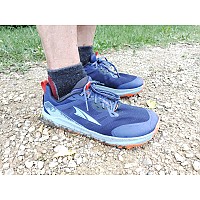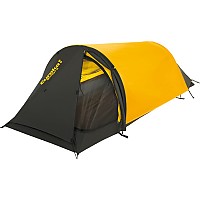Brunton 9020G
The 9020G has been discontinued. If you're looking for something new, check out the best handheld compasses for 2025.

Easy, quick, compact, affordable, light, durable. Sits well on map between thumb and pointer finger. Excels in daytime orienteering on foot or horseback.
Pros
- Easy
- Quick
- Compact
- Affordable
- Light
- Durable.
- Better than a clip-on for luggage or jacket
Cons
- Useless on a dark night
- No bezel lock
- No illumination
Yes, there are more precise instruments, but: it is easy to use, accurate, consistent, light, small enough for ultralight hiking, large enough to find quickly on a trotting horse.
It’s pretty basic, a good consistent north that stabilizes quick enough and a non-locking bezel. It is also pretty affordable.
In my opinion, wandering around in the wilderness, it is not just good enough, it’s perfect. It is well constructed. Definitely not a toy, but economical enough to give to a second or third grader interested in the skill.
Background
Owned it 8 years. Used it in the PNW countless times on horse and hiking. If I’m going off-road it’s in my pocket. I don’t need it as much as some. Currently own seven compasses including the Silva BSA I bought in 1967.
Grew up in the swamp. Orienteering Badge BSA; Surveyor’s Aid, shoreland and wetland; top of my basic land nav and orienteering course; light infantry air assault, jungle, and mountain.
Source: bought it used
Price Paid: $7
This compass was one of the first purchases I made when beginning to hike the wilderness. It is a simple compass with a small baseplate. The optic green/yellow baseplate is supposed to assist in legibility reading when placed over a map, this is something you'll either love, or hate.
The biggest problem with the 9020 is the method of adjusting declination. Rather than move the bottom of the compass dial through a small screw/worm drive as with Silva/Suunto compasses, the Brunton uses a simple friction adjustment and the orienting lines also move with the declination change. This means the compass cannot function as a protractor unless declination is readjusted back to zero, a needless complication. For those using a compass in low light this model is not the best, as the degrees/numbers are not printed on luminous material but simply printed onto sticky contact paper. The Brunton works acceptably, but I think there are better compasses out there for general wilderness use.
Price Paid: $20
Well, it does work, but only just. I found three major problems in using it as a general compass for hiking and orienteering:
1) The baseplate is too short, which saves space, but resulted in reduced accuracy when taking a bearing to distant landmarks, and it made the compass nearly useless for extending course legs or plotting map bearings. You'll need to carry a ruler or protractor as well, which cancels out the compactness advantage of the short baseplate.
2) The compass dial turns too easily - way too easily. Gently bump it accidentally, just once, and you've lost your hiking bearing.
3) No luminous markings - none, nada. In dim light you've got to constantly get out the flashlight (usually having to reset your hiking bearing each time b/c of problem 2).
Price Paid: $12
I agree with the first reviewer that there are better compasses out there for wilderness hiking, like the Silva Polaris or the Suunto M-2D or M-5.
As mentioned, the problem with the Brunton adjustable declination design is that it uses only friction to hold it in place (instead of a geared screw mechanism like Suunto or Silva) and it can and does slip occasionally. Also, as mentioned, the Brunton declination adjustment rotates the compass dial, preventing use of the compass as a map protractor unless you reset the compass declination back to zero each time. The guy that used his 9020 for orienteering would never encounter this, as orienteers use special maps set to magnetic north and never have to fool with declination.
This is a great compass. I use it for orienteering and I have not had a problem. The only thing is that I had to add a soft cord to it (my second - lost the first) so that I can keep it around my wrist and then held tightly in my hand. I just wish the company would have include this feature. I used the soft cord found on one of my shopping bags from a typical mall (women's clothing store bag).
I had to purchase a second one after I lost the first in an adventure race. Good thing I lost it as I was finishing the orienteering section. : )
An option cloth case with velcro might be purchased so as to keep it secured to the chest straps of your Hydration Pack but then it need a cord long enough to get a good reading - away from your body, watch, etc.
Price Paid: $11
This compass works and is accurate. However it is not the most user-friendly compass around. Declination adjustment is tool free but a bit of a pain to adjust and the base is a tad small for taking bearings.
I have had mine for several years now but recently got fed up with it and finally got a Suunto. I now keep it as my back-up compass.
Your Review
You May Like
Specs
| Price |
MSRP: $12.00 Historic Range: $8.99-$15.55 Reviewers Paid: $7.00-$20.00 |
| Weight |
1.3 oz |
| Overall dimensions |
4.5 in x 2.5 in x 0.5 in |
| Scales |
Inch, mm |
| Map Scales |
1:24k, 1:63.36k, 1:25k |
| Map Scales |
1:50k, 1:250k |









